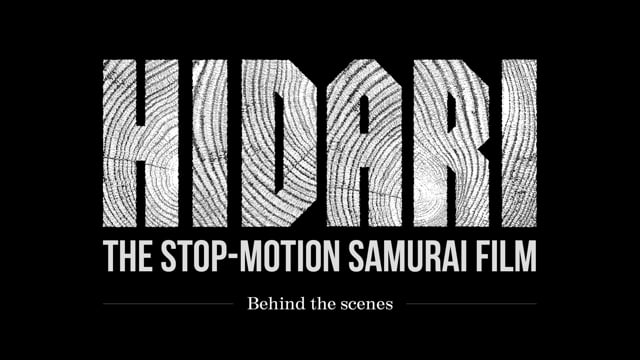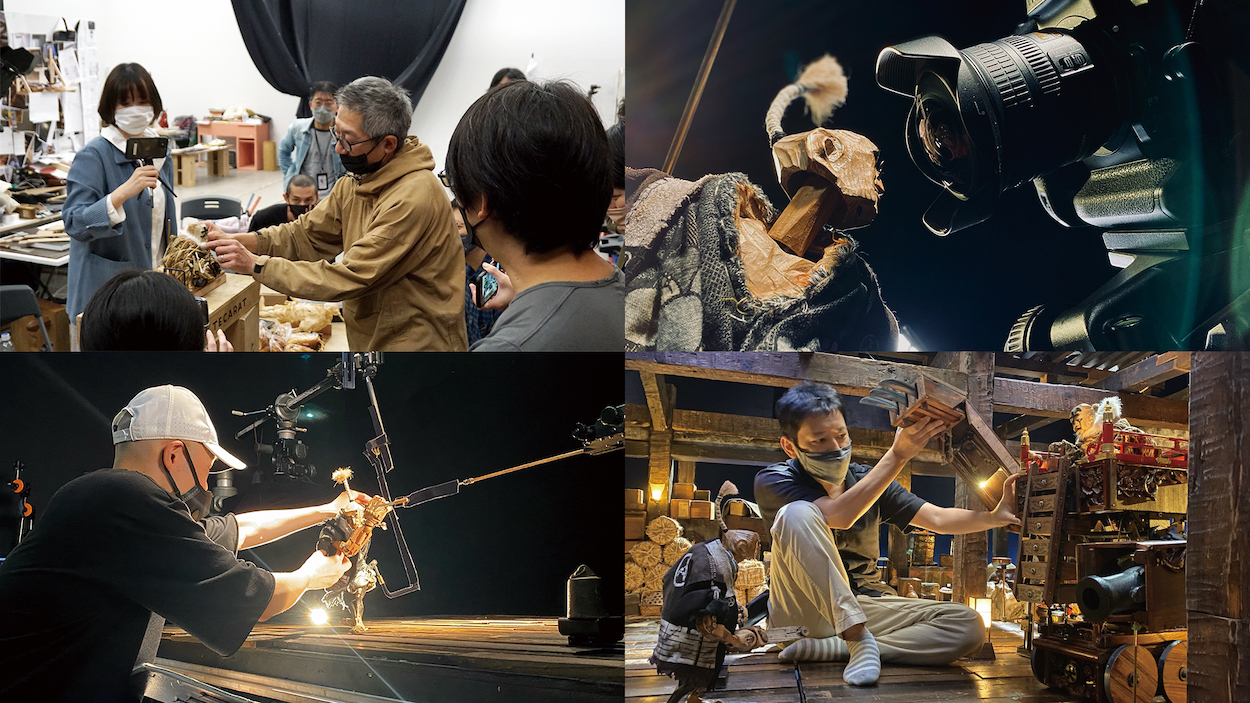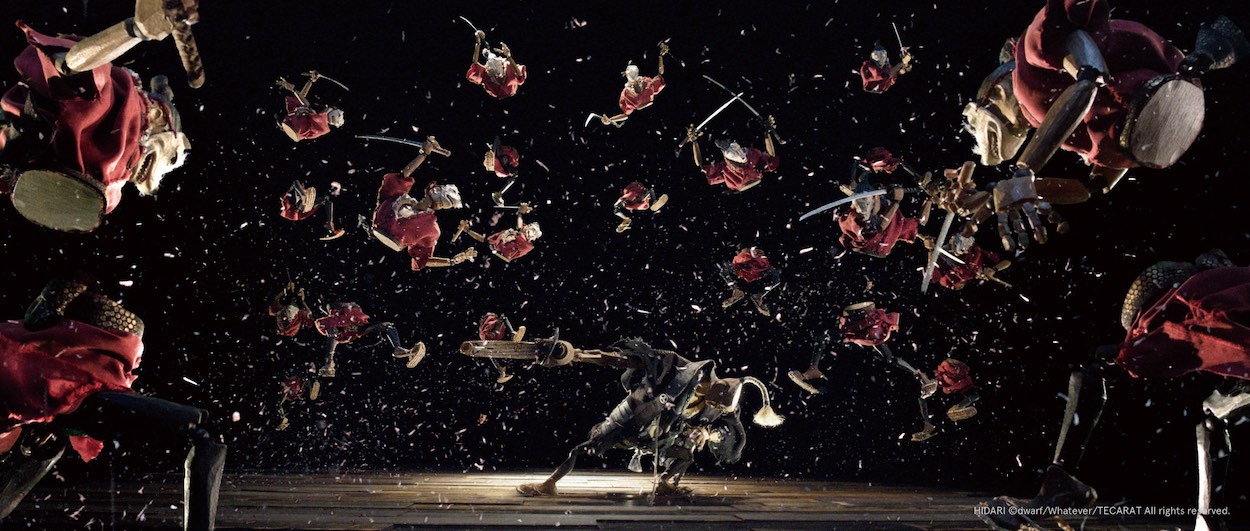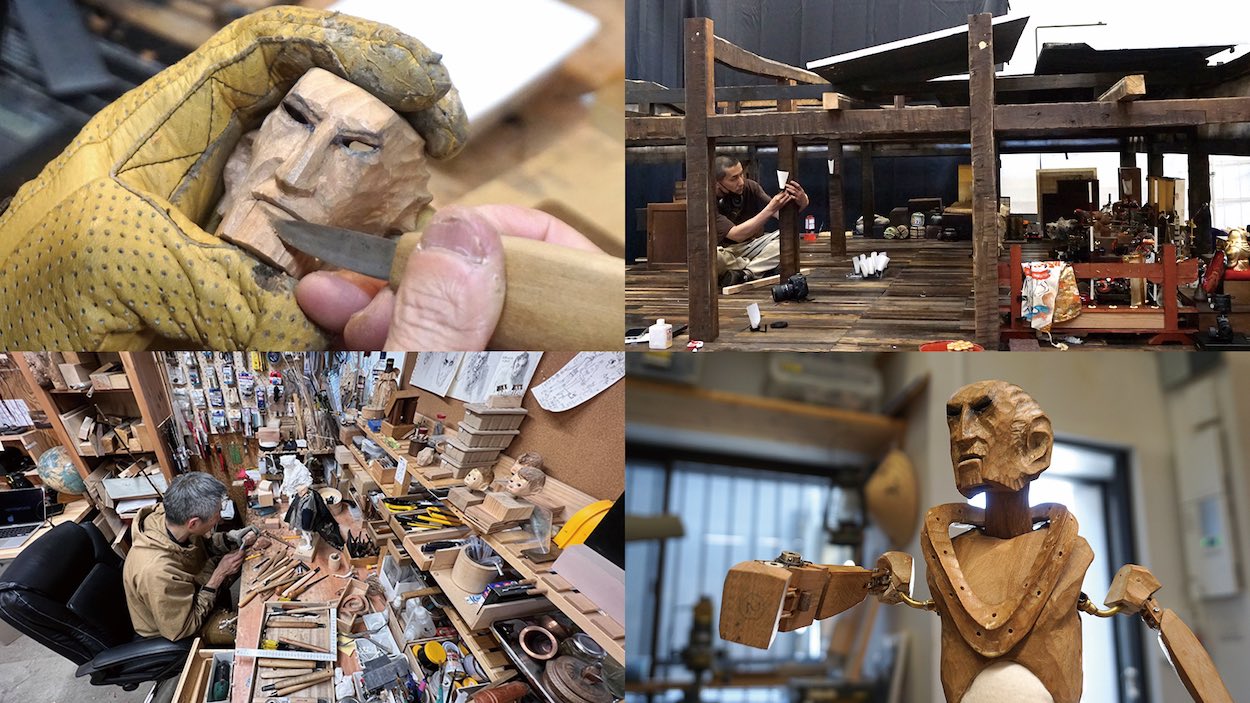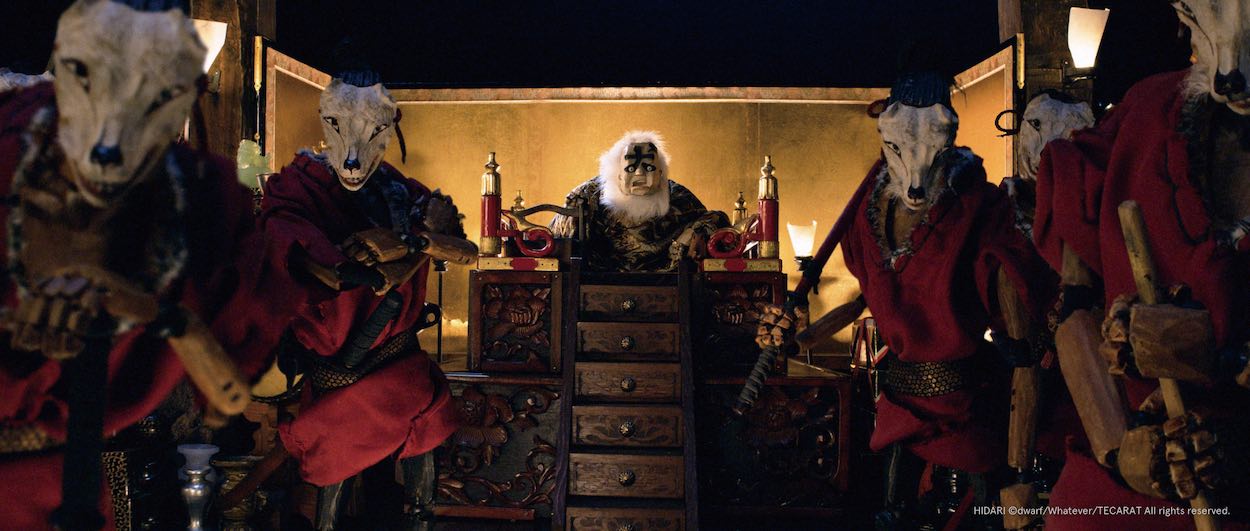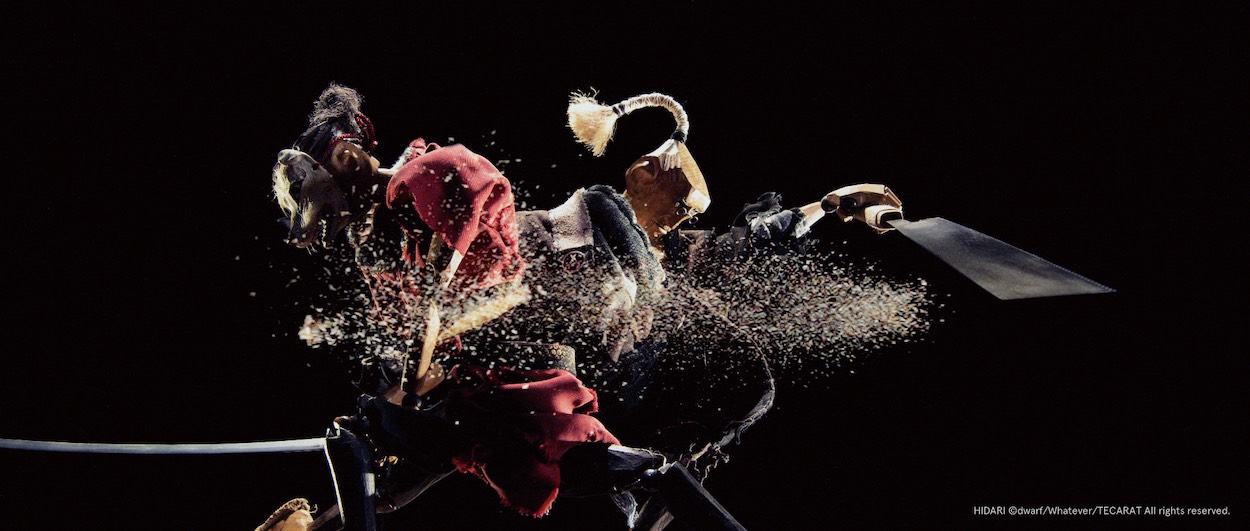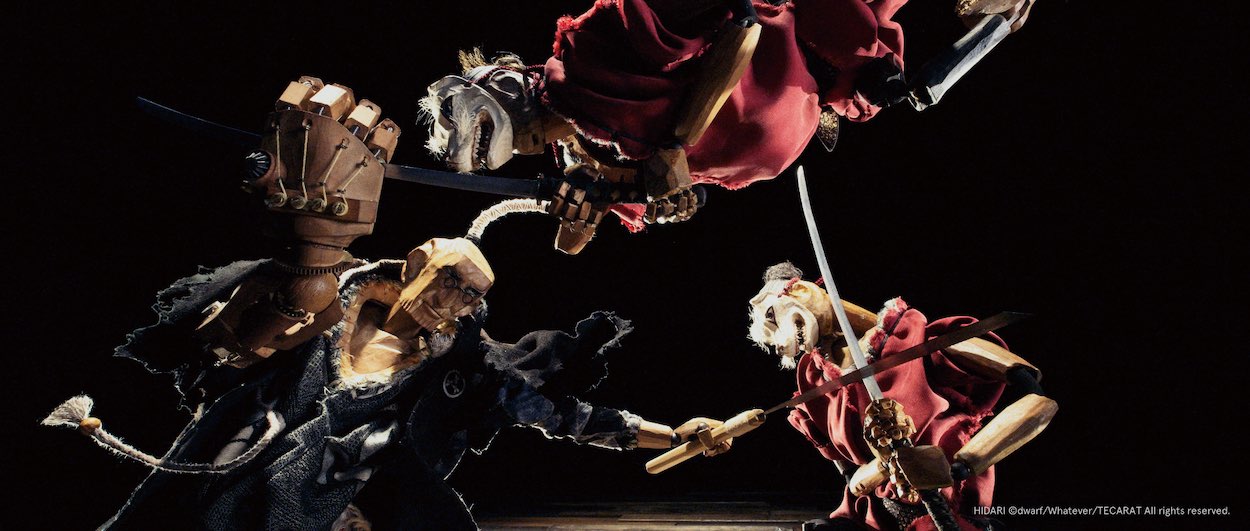What inspired you to base the film on the legend of Japanese artist Hidari Jingoro?
When Noriko Matsumoto, a seasoned producer at Dwarf Studios and my trusted collaborator on numerous projects, approached me to come up with an original film concept, I was immediately drawn to the challenge. The prospect of devising fresh stop-motion concepts with the studio was invigorating. As we were deep in the throes of brainstorming, a character from my past readings surfaced in my memory – Jingoro Hidari.
In spite of many art pieces like the renowned “Sleeping Cat” at Nikkou Toushouguu being credited to him, the very existence of Jingoro Hidari remains an enigma, echoing the mystique of street artists like Banksy. Traditional Japanese storytelling mediums such as Rakugo and Koudan depict Jingoro Hidari as a masterful woodcarver, with his life-like sculptures often springing to life. This lore bore a striking resemblance to the heart of stop-motion animation, which breathes life into the inanimate.
This inspired a vision: a samurai tale starring Jingoro Hidari, set in a world populated by wooden puppets reminiscent of his alleged creations. A vivid imagery took hold of me – where wooden characters, when struck, would release sawdust instead of blood. The sheer uniqueness of this concept thrilled me. When I presented this idea to the team, everyone embraced the idea wholeheartedly, exclaiming, “Let’s make this!” and at that moment I knew we were onto something exciting. And thus, our exhilarating journey began.
How do you approach fight scene choreography when planning your stop-motion animation? Do you begin with storyboarding?
When it comes to choreographing fight scenes for our stop-motion animation, the process was both structured and fluid. We started with a storyboard and a choreography flow-chart that I drew to visualize the fight sequence. This initial design was our foundation during the early animation tests. However, I was determined not to let our sketches impose limits on our ambitions to create a truly dynamic action sequence in the realm of stop-motion. This is why we let our lead action animator, Kimimasa Inazumi, significant creative freedom to improvise with the wooden puppets.
We were driven by the desire to craft an action sequence reminiscent of anime – envisioning movements that would be improbable, if not impossible, in a live-action setting. Initially, we considered consulting with real sword-fight experts and recording their motions for our choreography. However, it quickly became apparent that this would render the movements too lifelike and ‘human’. Such authenticity could inadvertently restrict the unique, fantastical potential that puppets can bring to the table
Tell us a bit about the difficulties of working with wood sculptures while shooting in stop-motion. How did you achieve the cracking and sawdust effects during the action sequences?
Working with wooden sculptures in stop-motion presented a myriad of challenges, but our dedication to authenticity shaped our approach. Typically, stop-motion filming employs pliable, durable, and replaceable materials for its puppets, making the animation process more manageable. However, the heart of our film rested in the tactile essence of genuine wood, a truth from which we were unwavering.
Each puppet was an artisanal masterpiece, meticulously hand-carved by our puppet director Kenji Yashiro. Given the labor-intensive nature of crafting these wooden figures, the prospect of producing several was daunting. For our pilot film, we successfully birthed 10 unique puppets (and not to forget one giant transforming robot). Considering the organic nature of wood, replicating an identical puppet was almost an insurmountable challenge. Yet, Kenji astounded us. By selecting a wood block with comparable growth rings, he forged two indistinguishably similar Jingoros. It’s noteworthy that if we had opted for modern methods like 3D printing, the task would have been simplified considerably. But we remained steadfast in our commitment to preserve the genuine materiality and essence of the wooden sculptures which connects back to the actual work by Jingoro.
Our dedication to realism extended to the sawdust effects as well. Instead of relying on computer graphics, we captured authentic sawdust effect. After finalizing the offline edit, we undertook nearly 50 separate shots of sawdusts in action, to mirror the trajectory of the sword slashes. By spreading genuine sawdust on black boards and manipulating it with wind blowers, we achieved the desired impact. These authentic shots were seamlessly integrated into the film during the online editing phase, ensuring that every grain of sawdust viewers see is as real as the wooden puppets they emanate from.
Stop-motion animation is a very intricate process, and is famously slow to produce. How long did the pilot film take to shoot?
Completing the pilot film was an odyssey that spanned roughly a year and a half from its conception to its fruition. The core filming process alone was an intense 30 days of continuous day and night effort.
What other challenges did you encounter while shooting?
Initially, our operations commenced on two stages. But given the constraints of our timeline and budget, we soon recognized the need for expansion, ultimately operating across five stages. And as we expanded our stages, we found ourselves in need of more hands. Serendipitously, many animators were visiting our studio to check out the unique creative process of this film, so we started to recruit them after the tour of the set. Fortunately, many of them were excited about our project, and eagerly raised hands to join our team and assist with the filming process.
While it wasn’t necessarily a hurdle we faced, there’s a heartwarming anecdote that underscores the passion and commitment that went into our production. The “armrest dog” wasn’t originally scripted. On one occasion, when Kenji presented the Inumaru puppet at the studio, he showcased a decorative dog-shaped armrest for it. Upon my initial viewing, I misinterpreted it as a sentient dog, repurposed as Inumaru’s armrest. I was taken with the concept – envisioning Inumaru with a loyal sidekick, akin to Jingoro and his iconic sleeping cat. Excitedly, I inquired about animating the dog, but Kenji clarified its static nature; it was merely a decorative armrest. The story could’ve ended there, but the next day at the studio, we discovered a reimagined, articulated version of the “armrest dog” puppet. Inspired by our conversation, Kenji worked overnight to craft this movable puppet, feeling its addition would enrich our narrative. This spontaneous act of creativity didn’t just amplify our story – it set the stage, gracing our film with its very first scene.
You’re planning to develop HIDARI into a feature-length film. What plans do you have for the full film?
Yes, turning “HIDARI” into a feature-length film has always been our endgame. Naturally, such an endeavor demands a considerably more expansive budget and a substantially larger crew than our pilot project. Given these challenges, our strategy began by producing a pilot film that could effectively encapsulate the essence of a “wooden stop-motion samurai film.” This initial project was brought to life thanks to a blend of personal investments and crowdfunding contributions.
Having successfully wrapped up our pilot, we are now primed to utilize it as a compelling pitch tool. Our aim is to engage with various production companies and potential investors, laying out our vision and inviting them on board to help transition “HIDARI” from a short into a feature-length spectacle.
In terms of the narrative, I’ve penned multiple drafts of the “full” script, although we had to condense it considerably to fit the pilot’s five-minute window. Hence, the pilot was primarily focusing on the action sequences, which best captured the film’s distinctive visual flavor. However, the envisioned feature film dives much deeper. Audiences will immerse themselves in the poignant drama surrounding Jingoro: his roots, the circumstances leading to the loss of his arm, his rigorous self-training, and his pursuit of revenge. This expansive narrative will introduce an array of distinctive antagonists and climax in an epic showdown with a colossal Edo-Castle that’s transformed into a monstrous robot. I hope we can share the completed feature film to our supporters and the wider audience as soon as we can.
HIDARI is your directorial debut, having spent most of your career at various creative agencies. What made you decide to move towards directing, and why this project?
While my foundational experience lies in the world of creative agencies, directing was never foreign to me. Parallel to my agency work, I’ve been at the helm of numerous music videos, TV programs, and short film productions. Having established my own venture, Whatever Co., our project portfolio underwent a transformation. Advertising, which once dominated our roster, now represents a fraction of our endeavors, with the majority of our energy being channeled into the domain of entertainment.
This evolving dynamic amplified my desire to venture into a full-length film, although the right catalyst for such an endeavor remained elusive. When Noriko reached out, it felt like serendipity. There was an almost instinctive realization that this could be the project I had been waiting for.
Don’t get me wrong; I still enjoy creating campaigns and advertisements. Yet, there’s an undeniable allure in conceptualizing and nurturing your own original IP. It’s not only a testament to unbridled creativity, but also offers a more sustainable avenue for creative expression in the long run.
Is there anything else you would like to mention?
It would be wonderful if you can support our project, by following us on Twitter (aka X), Instagram, and YouTube! We are now eagerly looking for partners and investors, so please give us a shout if you’re interested. Thanks for reading!
Interview by Becca Nichols
INFO
Masashi Kawamura website
Contact: masashi@whatever.co
@masakawa on X
@masakawamura on insta

